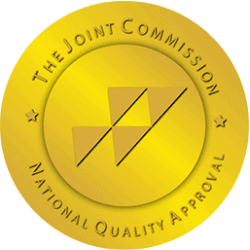Identifying Mental Health Conditions in Adolescents and Available Treatments

The adolescent phase is a tumultuous period characterized by considerable emotional and physical development. As teenagers navigate the complexities of growing up, they experience an array of changes that can impact their mental health. Recognizing mental health conditions in adolescents is crucial, as undiagnosed issues can have long-term implications on their overall well-being, academic performance, and social relationships. This post aims to explore the identification of mental health conditions in adolescents, the challenges involved, and the various treatment options that are presently available.
Identifying mental health conditions in adolescents is the first critical step towards appropriate intervention and treatment. Adolescents may present a unique set of challenges in identification compared to adults due to their fluctuating emotions and behaviors. Diagnostic manuals, like the DSM-5 (Diagnostic and Statistical Manual of Mental Disorders, Fifth Edition), categorize psychopathology into various groups, including mood disorders (e.g., depression, bipolar disorder), anxiety disorders, personality disorders, and psychotic disorders. Research indicates that around 20% of adolescents experience a mental health disorder, with the prevalence increasing in recent years, particularly following the global COVID-19 pandemic.
Early identification of mental health conditions in this age group is essential as symptoms can often masquerade as typical teenage behavior. Common indicators include mood swings, changes in appetite or sleep patterns, withdrawal from social interactions, decline in academic performance, and substance use. Teachers, parents, and peers play integral roles in recognizing these signs, yet stigma surrounding mental health may often hinder open discussions regarding these symptoms. It is imperative to foster a culture of acceptance and understanding, encouraging individuals to seek help and communicate feelings without fear of judgment.
Moreover, the use of standardized screening tools can aid in the early detection of mental health conditions in adolescents. Instruments like the Patient Health Questionnaire-9 (PHQ-9) for depression or the Generalized Anxiety Disorder-7 (GAD-7) for anxiety provide a structured method for assessing symptoms. These tools can be administered in school settings or healthcare environments to streamline the identification process. Collaborating with mental health professionals, such as counselors and psychologists, can further assist in diagnosing complex cases and developing a comprehensive treatment plan.
Once a mental health condition has been identified, various treatment options are available for adolescents. These encompass psychotherapeutic interventions, pharmacological treatments, and holistic approaches. Individual therapy, particularly cognitive-behavioral therapy (CBT), has been extensively researched and shown to be effective in treating conditions such as anxiety and depression. CBT focuses on addressing negative thought patterns and promoting coping mechanisms, which can greatly benefit adolescents struggling with mental health issues.
In certain instances, medication may be warranted as a component of treatment. Antidepressants, such as selective serotonin reuptake inhibitors (SSRIs), have been shown to be effective in treating mood disorders. However, the decision to prescribe medication should involve thorough evaluation and regular monitoring due to the variation in adolescents’ responses to pharmacological interventions. It is crucial that parents, caregivers, and health professionals work collaboratively to ensure that any medication prescribed is accompanied by supportive therapeutic strategies.
Furthermore, holistic treatment approaches are gaining traction in adolescent mental health care. Mindfulness techniques, regular physical activity, nutrition, and sleep hygiene are vital components that can positively influence mental health outcomes. Schools can play a pivotal role in promoting mental well-being by incorporating wellness programs, physical education, and mindfulness practices into the curriculum. Additionally, family involvement in the treatment process often enhances outcomes, as adolescents benefit from the support of their loved ones in navigating the challenges of mental health.
How Do Mental Health Conditions Present in Adolescence?
Adolescence, defined as the transitional period between childhood and adulthood, is marked by profound physical, emotional, and psychological changes. While this period can be a time of exploration and self-discovery, it is also a critical juncture for the development of mental health conditions. During adolescence, individuals may experience a spectrum of emotional and behavioral symptoms, often influenced by a combination of biological, psychological, and social factors. Understanding how mental health conditions present in adolescents is essential for early detection, intervention, and ongoing support.
One of the primary reasons mental health conditions frequently emerge during adolescence is the significant neurodevelopmental changes that occur during this period. The brain is still maturing, particularly in areas related to decision-making, impulse control, and emotional regulation. These changes can manifest as heightened emotional volatility, increased sensitivity to stress, and a greater propensity for risk-taking behavior. Conditions such as anxiety disorders and depression may present through changes in mood, sleep patterns, and social interactions. For instance, an adolescent suffering from depression may exhibit persistent sadness, withdrawal from social activities, changes in appetite, and a decreased interest in previously enjoyable activities.
Anxiety disorders are among the most common mental health conditions affecting adolescents. These disorders may manifest through excessive worry, restlessness, irritability, and physical symptoms such as increased heart rate or gastrointestinal distress. It is critical to recognize that anxiety can emerge in varied forms, including generalized anxiety disorder, social anxiety disorder, and panic disorder. Adolescents might experience overwhelming fear in specific social situations, leading to avoidance behaviors that could harm their academic performance and social relationships. The identification of anxiety in adolescents is often complicated by the fact that many may not articulate their feelings adequately, opting instead to exhibit somatic symptoms or engage in avoidance behaviors.
Another prevalent condition during adolescence is attention-deficit/hyperactivity disorder (ADHD). ADHD can manifest as inattention, impulsivity, and hyperactivity, leading to significant challenges in academic and social settings. While symptoms of ADHD may begin in childhood, it often becomes more pronounced during adolescence due to increased academic demands and social pressures. Adolescents with ADHD may struggle to complete assignments, maintain organization, and adhere to deadlines, leading to academic underachievement and frustration. These challenges may further exacerbate feelings of inadequacy, leading to co-occurring conditions such as depression and anxiety.
Substance use disorders also frequently intersect with mental health conditions in adolescence. Many adolescents experiment with drugs and alcohol as a means of coping with emotional distress or fitting in socially. Substance use can serve as a maladaptive coping mechanism but may also aggravate underlying mental health issues, creating a cycle of dependence and worsening mental health. The duality of substance use and mental health conditions underscores the urgent need for an integrated approach to assessment and treatment during this formative stage of life.
Furthermore, the impact of social media and technology cannot be overlooked in the discussion of adolescent mental health. The pervasive use of social media has been linked to increased feelings of loneliness, anxiety, and body image concerns among adolescents. The continuous exposure to curated online personas can lead to unrealistic comparisons and contribute to feelings of inadequacy. Adolescents may present with increased social anxiety, depression, or cyberbullying-related trauma due to these influences, necessitating a deeper understanding of the digital landscape’s role in shaping their mental health.
The cultural and societal context can also play a significant role in how mental health conditions present in adolescents. Issues such as stigma, socioeconomic status, and access to mental health resources can influence an adolescent’s willingness to seek help and the manifestation of their symptoms. Adolescents from marginalized backgrounds may experience compounded stressors, including discrimination and community violence, which can elevate their risk for developing mental health conditions.
Mental health conditions in adolescence can manifest through a complex interplay of biological, psychological, and social factors. Characteristics such as mood fluctuations, anxiety, attention difficulties, and the impact of technology reflect the nuanced ways these conditions present themselves. Early recognition and intervention are vital. Educators, clinicians, and parents must foster open communication and create supportive environments that encourage adolescents to seek help without fear of stigma. By understanding the multifaceted nature of mental health in adolescence, society can better equip itself to support young individuals in navigating this critical developmental stage.
Common Treatments for Adolescents with Mental Health Conditions

The prevalence of mental health conditions among adolescents is a significant public health concern, affecting approximately one in five young individuals in the United States alone. Conditions such as anxiety disorders, depression, attention-deficit/hyperactivity disorder (ADHD), and others can severely impact a young person’s academic performance, relationships, and overall quality of life. Given the complexities associated with mental health in adolescents, a multifaceted approach that synthesizes a variety of therapeutic interventions is often required. The following delves into the common treatment modalities employed to address mental health conditions in adolescents, focusing on psychotherapy, pharmacological interventions, and holistic approaches.
Psychotherapy as a Cornerstone of Treatment
Psychotherapy, often referred to as talk therapy, constitutes a cornerstone in the treatment of mental health conditions among adolescents. Various forms of psychotherapy have demonstrated efficacy, with Cognitive Behavioral Therapy (CBT) being particularly prominent due to its structured, goal-oriented framework. CBT helps adolescents identify and rectify cognitive distortions—negative thought patterns that contribute to emotional difficulties. For instance, an adolescent experiencing depression may learn to challenge pervasive feelings of hopelessness by reframing them into more positive, actionable thoughts. Research suggests that CBT can significantly reduce symptoms of anxiety and depression in adolescents, making it a first-line treatment option.
Another effective form of psychotherapy is Dialectical Behavior Therapy (DBT), which incorporates mindfulness and emotional regulation strategies. Initially developed for individuals with borderline personality disorder, DBT has been successfully adapted for various populations, including adolescents struggling with emotion dysregulation, self-harm, and suicidal ideation. The skill-building component of DBT equips adolescents with coping mechanisms to navigate emotional distress, thereby mitigating potentially harmful behaviors.
Family therapy also plays a crucial role in treating adolescent mental health conditions, particularly when familial dynamics contribute to the individual’s psychological distress. Engaging family members in therapy can foster better communication, improve supportive relationships, and address the broader contextual factors influencing the adolescent’s mental health.
Pharmacological Interventions: A Complementary Approach
While psychotherapy remains essential, pharmacological interventions are often necessary, particularly for moderate to severe mental health conditions. Antidepressants, such as selective serotonin reuptake inhibitors (SSRIs), have been widely prescribed for depression and anxiety disorders in adolescents. Research indicates that these medications can effectively alleviate symptoms, particularly when combined with psychotherapy. However, the decision to initiate pharmacotherapy must be carefully considered, balancing potential benefits against the risk of side effects, which can be particularly pronounced in younger populations.
Moreover, for adolescents with ADHD, stimulant medications such as methylphenidate and amphetamines are considered the gold standard treatment. These medications function by increasing levels of neurotransmitters such as dopamine and norepinephrine, thereby enhancing attention and impulse control. However, monitoring is essential to ensure that the adolescent responds positively to the medication and to adjust dosages as needed.
It is vital for mental health professionals to adopt a holistic approach when considering pharmacological treatments. This involves not only monitoring the effects of medication but also integrating psychotherapy and lifestyle modifications, such as engaging in regular physical activity and maintaining balanced nutrition, which can further augment treatment outcomes.
Holistic and Integrative Approaches
In recent years, there has been a growing recognition of the importance of holistic approaches in treating mental health conditions in adolescents. Complementary therapies, including mindfulness meditation, yoga, and art therapy, have gained traction as effective adjuncts to traditional treatment modalities. These approaches promote overall well-being and can enhance self-awareness and emotional regulation, thereby equipping adolescents with tools to cope with stressors.
Mindfulness practices, which involve focusing on the present moment without judgment, have shown promise in reducing symptoms of anxiety and depression. Such practices can foster resilience, helping adolescents navigate the complexities of adolescence with a more balanced perspective.
Furthermore, psychoeducation—that is, educating adolescents and their families about mental health conditions—plays a fundamental role in destigmatizing mental illness and empowering individuals. By understanding the nature of their condition and the available treatment options, adolescents can become active participants in their recovery journey.
Addressing mental health conditions in adolescents requires a comprehensive and individualized treatment approach that encompasses psychotherapy, pharmacological interventions, and holistic strategies. As mental health awareness grows, so too does the imperative to ensure that adolescents receive adequate support and resources to promote healing and resilience. Mental health professionals, educators, and families must collaborate to create a nurturing environment that prioritizes mental well-being, ultimately paving the way for healthier futures for young individuals.
Why Ambrosia Behavioral Health is #1 in Adolescent Mental Health Treatment

In recent years, the increasing prevalence of mental health issues among adolescents has become a pressing concern for families, educators, and healthcare professionals alike. The statistics are staggering: according to the National Institute of Mental Health, approximately one in five adolescents experience a mental health disorder each year. In this climate of urgency, organizations dedicated to addressing adolescent mental health have emerged as beacons of hope. Among these, Ambrosia Behavioral Health stands out as a leader, consistently earning recognition as the premier provider of treatment for the adolescent population. Several factors contribute to Ambrosia’s prominent standing, including its comprehensive treatment approaches, highly specialized staff, and commitment to family involvement.
First and foremost, Ambrosia Behavioral Health employs a holistic and individualized treatment model tailored to the specific needs of each adolescent. Unlike conventional facilities that may apply a one-size-fits-all model to their treatment protocols, Ambrosia recognizes that each young person presents with unique challenges and circumstances. Their assessments incorporate a variety of tools, identifying not only the presenting mental health issues—such as anxiety, depression, or substance abuse—but also the social, familial, and environmental factors that may exacerbate these conditions.
This comprehensive understanding allows the clinicians at Ambrosia to construct personalized treatment plans that incorporate evidence-based practices. From cognitive-behavioral therapy (CBT) to dialectical behavior therapy (DBT), the treatment modalities employed are designed to equip adolescents with coping skills and healthier perspectives. Furthermore, Ambrosia places a strong emphasis on the integration of therapeutic activities, including art and music therapy, which allows for emotional expression in a non-verbal format—essential for many adolescents who may struggle with traditional communication. This multi-faceted approach not only addresses the symptoms of mental illness but also fosters a greater sense of self-esteem and resilience among adolescents, enhancing their long-term well-being.
Another critical aspect that differentiates Ambrosia Behavioral Health from other facilities is its commitment to recruiting and maintaining a highly specialized staff. The clinical team comprises licensed psychologists, therapists, and psychiatrists with extensive training and experience in adolescent mental health. This depth of expertise is invaluable, as mental health treatment for adolescents requires not only clinical knowledge but also a nuanced understanding of developmental psychology and the specific complexities that arise during adolescence. Ambrosia’s professionals are skilled in building rapport and creating safe spaces where young individuals feel empowered to share their struggles and fears.
Moreover, Ambrosia’s staff are committed to ongoing education and professional development, ensuring that they remain abreast of the latest research and methodologies in adolescent mental health care. This dedication to continuous improvement reinforces the organization’s status as a leader in the field, demonstrating a commitment to excellence that directly benefits the young people they serve.
Equally important is Ambrosia’s commitment to family involvement in the treatment process. Recognizing that mental health issues do not exist in isolation, Ambrosia actively engages families as crucial partners in their adolescent’s recovery journey. Family involvement not only provides additional support for the adolescent but also facilitates communication, understanding, and healing within the family unit. Ambrosia offers family therapy sessions and educational programs aimed at helping families understand the mental health challenges facing their loved ones and equipping them with the tools needed to foster a nurturing environment. This collaborative approach reinforces the idea that recovery is a shared journey, whereby families play an integral role in the support system of the adolescent.
Ambrosia Behavioral Health’s prominent position as the number one provider of adolescent mental health treatment can be attributed to its holistic and individualized treatment methodologies, specialized and dedicated staff, and unwavering commitment to family involvement. In a landscape where mental health issues among adolescents are increasingly recognized, organizations like Ambrosia lead the way in offering compassionate, comprehensive, and effective care. Their successful treatment outcomes not only improve the lives of adolescents but also help to dispel the stigma surrounding mental health concerns. As the understanding of adolescent mental health continues to evolve, Ambrosia Behavioral Health remains committed to pioneering exemplary standards of care that prioritize the well-being and future of our youth.
In Conclusion
In summary, the identification of mental health conditions in adolescents is a vital process that necessitates understanding, patience, and collaboration among various stakeholders. By recognizing the signs and symptoms associated with mental health disorders and utilizing appropriate screening tools, adults can advocate for early intervention. A combination of psychotherapeutic interventions, medications, and holistic approaches presents a comprehensive framework for treatment. With continued efforts to reduce stigma and foster supportive environments, it is possible to promote better mental health and well-being among adolescents, ultimately leading to healthier futures.
Ambrosia stands at the cutting edge of addiction treatment and mental health treatment in Florida. With over a decade of experience in the field, and with a strong focus on science backed research fueling their advanced treatment methods, Ambrosia Behavioral Health stands a nation’s leading facility for the treatment of substance abuse and mental illness for adult and adolescents. If you or someone you know is struggling reach out today and we provide you with exemplary customer service and truly effective treatments.




